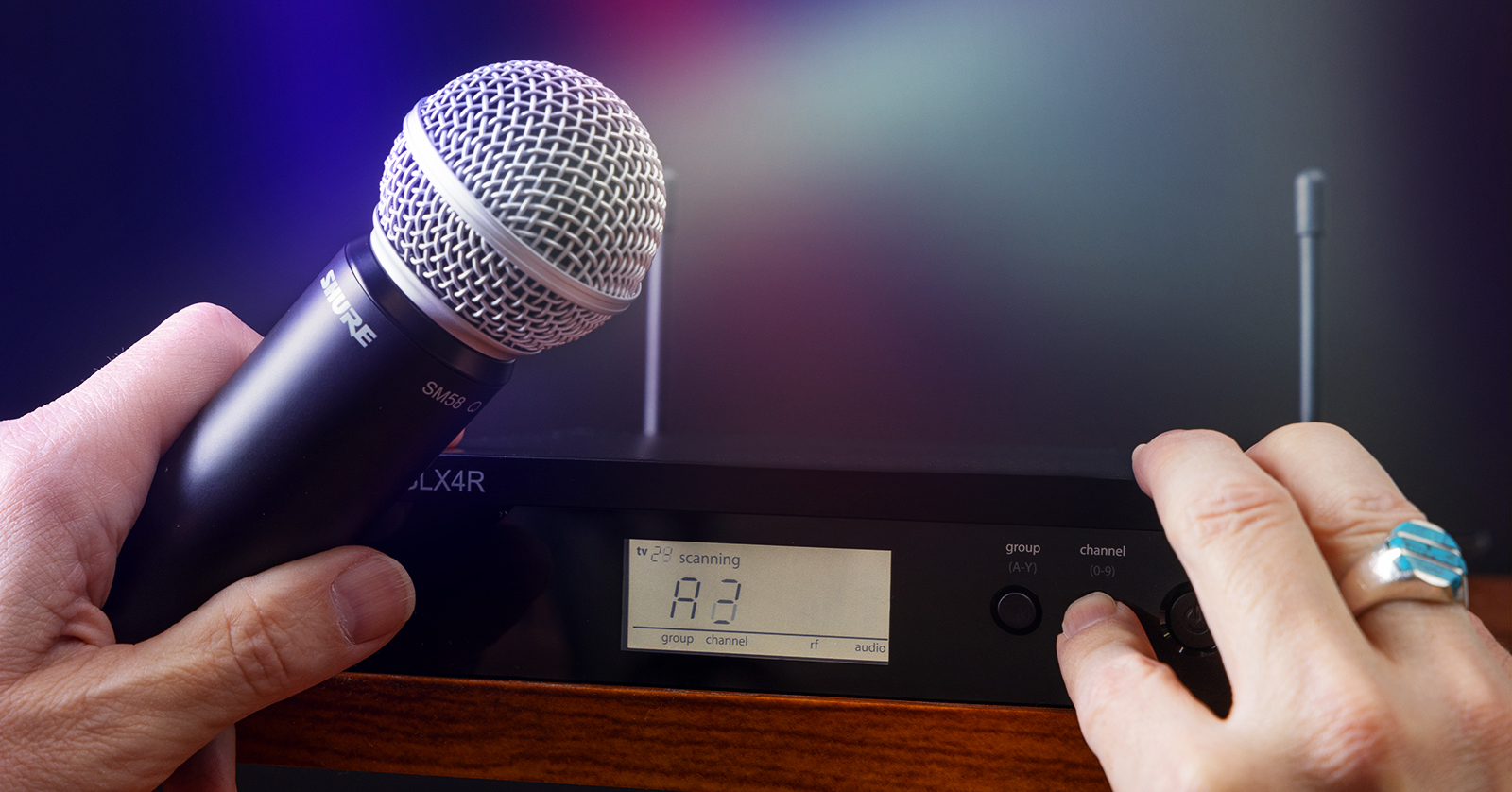How to Resolve Wireless Interference and Wireless Problems

Wireless interference can be a nuisance and sometimes a little tricky to figure out. In this guide, we will show you how to resolve wireless interference and common wireless problems you may run into. Follow the sections below to get started.
Battery Life
When facing wireless problems, the easiest thing to check is the batteries. Cheap, generic batteries are not recommended because they are unstable and don’t last very long. Make sure you use brand-name batteries and remove the batteries from the transmitters after each performance. This will help prolong the life of the batteries.
If you’re using rechargeable batteries, please note that they also have a cycle limit, and the capabilities will lessen over time. We recommend replacing rechargeable batteries once every six months or so, depending on battery performance.
Wireless Channel Coordination
If you are facing wireless interference or other issues, the first thing to check is that your transmitter and receiver are set to a clear frequency. Wireless systems share the same wireless spectrum as TV and radio stations, which can be broadcast from 50 to 60 miles away! Finding a clear frequency in highly populated areas makes things even more difficult.
Finding a clean frequency can be challenging, but most systems nowadays have an auto-scan feature that will often fix the issue.
Shure has also created helpful software that allows you to perform RF scans to identify the best available frequency near you. Check out their video playlist below to learn more about using Wireless Workbench.
Shure Wireless Workbench Fundamentals Playlist
Wireless Dropout
One of the most common issues with wireless system setups is dropout. One cause is multipath interference. Wireless receivers and transmitters send signals in a relatively straight line, so if there are multiple paths or reflections (like walls), dead spots may occur, resulting in dropout.
First, make sure that the antennas are facing away from each other (in a V shape). Also, ensure a direct line of sight between the transmitter and the receiver.
Another cause of wireless dropout is the squelch setting on your transmitter. Think of this setting as a gate but for wireless systems. The squelch allows signal through at a set threshold. Since wireless systems are vulnerable to RF interference, the squelch helps counteract it.
If you get dropouts (or have no audio), decrease the squelch setting. Please note that under normal conditions, you should always set the squelch control to the minimum amount so you can utilize the full sensitivity of the receiver.
Wireless Distortion
Another problem you may face with wireless systems is distortion. A few different things can cause this. The most common cause is gain structure: if the gain is set too high, you’ll start encountering distortion. Along with that, the sensitivity setting may also be set too high. Sensitivity is essentially the trim of a wireless system, so you may need to adjust the two to find a good balance.
If you have a wireless beltpack that has a “whip” antenna, distortion issues may occur if the antenna is bent, tangled up, or stuck in your pocket. So, make sure you’re wearing the beltpack correctly!
- If the antenna isn’t bent but you are still running into issues with the beltpack, the antenna may need to be replaced.
Cell phones and other wireless devices can also interfere and cause distortion depending on the frequency range to which your wireless system is set. If you do run into distortion, move your cell phones and wireless devices away to see if that solves the issue.
Signal Blockage
You may encounter wireless interference due to signal blockage. If your wireless system is located close to metal objects, walls, or wood, you can face a variety of wireless problems. Surprisingly, the human body can absorb the wireless transmission as well, so it’s best to have your wireless receiver elevated and away from any hard surfaces.
Five Common Wireless Microphone Problems
Related Articles
When you need help, Sweetwater has the answers!
Our knowledge base contains over 28,000 expertly written tech articles that will give you answers and help you get the most out of your gear. Our pro musicians and gear experts update content daily to keep you informed and on your way. Best of all, it’s totally FREE, and it’s just another reason that you get more at Sweetwater.com.


